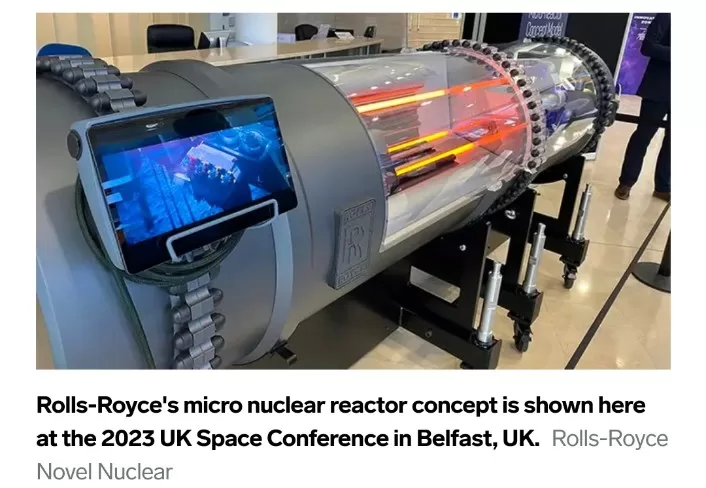Rolls-Royce has introduced a conceptual model of a micronuclear reactor, signaling its ambition to contribute to lunar exploration. The micro-reactor, designed to power future moon colonies, is part of a project supported by a £2.9 million ($3.6 million) contract from the UK Space Agency.
Abi Clayton, the Director of Future Programs at Rolls-Royce, stated, “Our Space Micro-Reactor Concept Model allows us to demonstrate how this technology will bring immense benefits for both space and Earth.” The unveiling took place at the 2023 UK Space Conference in Belfast.
The initiative aims to create a reliable power source for astronauts involved in establishing colonies on the moon. Rolls-Royce envisions having a functional reactor ready for lunar deployment by the early 2030s, with the project scheduled to take six more years for completion.
Micronuclear reactors, significantly smaller than those powering terrestrial electric grids, generate less than 50 megawatts of electric power. The scaled-down power stations follow the same principles as full-scale reactors, utilizing nuclear fuel decay to produce heat, subsequently driving turbines or other systems to generate electricity.
As various space agencies, including NASA, plan lunar missions within the next decade, the prospect of long-term settlements on the moon necessitates reliable energy sources. While solar energy is an option, its reliability is affected by lunar conditions. In contrast, micronuclear reactors can offer a constant and dependable energy supply.
Rolls-Royce joins other companies, such as Lockheed Martin, Westinghouse, and IX (Intuitive Machines and X-Energy joint venture), in developing miniature reactors for space applications. NASA, with its Kilopower Reactor Using Stirling Technology (KRUSTy) concept, has also explored small-scale nuclear fission power systems. These initiatives lay the groundwork not only for lunar exploration but also for potential advancements in technology for future missions, including those to Mars.




